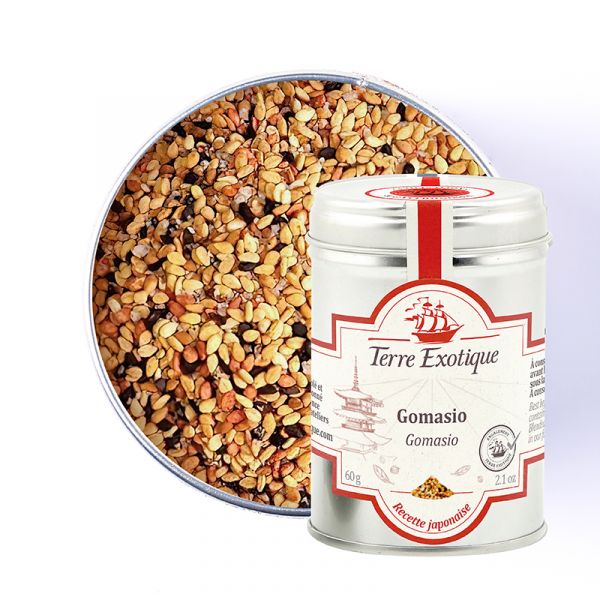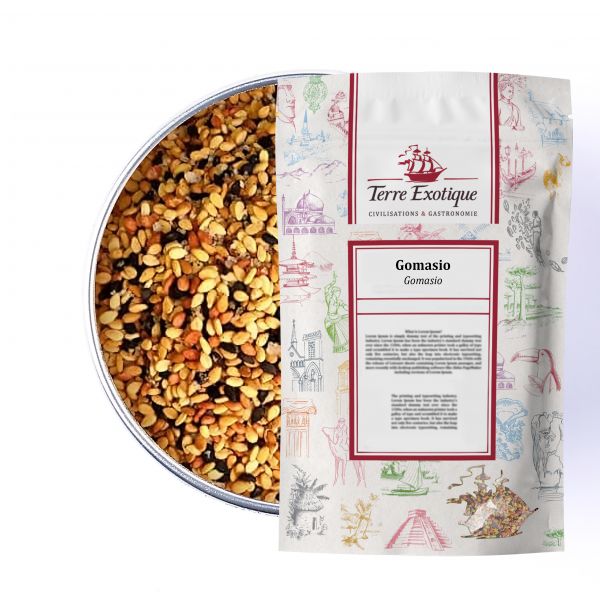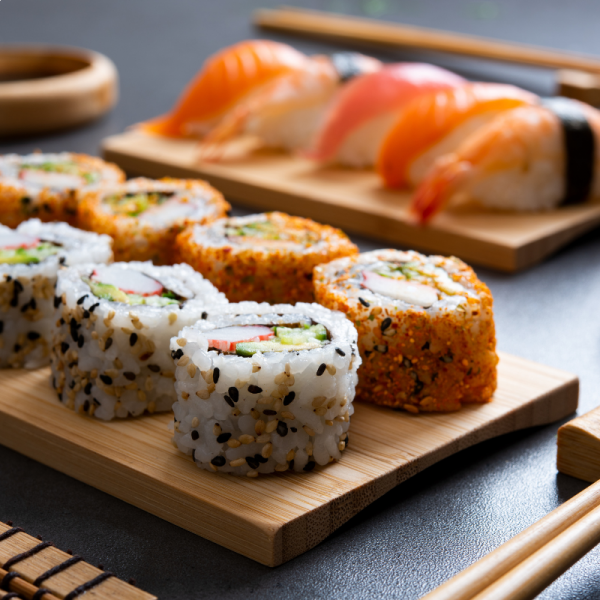





Where to use gomasio ?
Explore these delicate
Japanese flavours
Gomasio is often used
to replace salt in traditional Japanese cuisine so it’s everyday everywhere.
Excellent in winter soups and summer salads, it will enchant your meat, fish,
vegetables and avocado.
How to get the best
from your gomasio ?
Our recipe ideas for
gomasio:
·
Broccoli with gomasio: sprinkle your broccoli with a pinch
of gomasio just before serving;
·
Sushi: roll your sushi in gomasio just before
serving;
·
Salmon tataki: sear your salmon slices, then
sprinkle with gomasio and enjoy;
·
Japanese chicken: add a few pinches of gomasio to your
marinade;
·
Avocado toast with gomasio: add a few pinches of gomasio to
your avocado toast;
·
Wok sauteed noodles: sprinkle a teaspoon of gomasio on
your noodles just before serving.
Catfish with gomasio
Ingredients
8 thin slices of
catfish;
2 tablespoons flour;
2 tablespoons breadcrumbs;
3 tablespoons Yuzu juice;
3 tablespoons olive
oil;
4 tablespoons Gomasio.
Method
Mix the flour, breadcrumbs
and the yuzu juice together in a bowl. Roll the slices of catfish in the
breadcrumb mix. Fry them in hot oil in a frying pan for about 2 to 3 minutes then
sprinkle with gomasio. Serve with grilled vegetables or salad.
Our tip: if you can’t get hold of catfish, use monkfish,
cod or hake.
The
essential Japanese mix
This Japanese mix is bursting with
sweet and spicy flavours. The roasted sesame seeds add notes of caramel and hazelnut
which are go deliciously with the mild aromas of the umeboshi plum.
Gomasio, the Japanese mix
The name Gomasio
comes from the Japanese words “goma” which “sesame” and “shio” which means
“salt”. This roasted spice mix is made from Golden Sesame, Black Sesame,
Sesame with Umeboshi plums from Wakayama and fleur de sel from Ifaty.
The umeboshi plum is
from the same family as apricots and plums. The umeboshi plum cannot be eaten
raw, but is used in jam, sweets or cordials. It is also used to produce Umeshu,
a very fruity and sweet Japanese liqueur.
Sesame seeds are widely
used in Japanese cuisine, especially in furikake, a vital Japanese seasoning.
In gomasio, sesame seeds are roasted then mixed with a brine made with Ume
plums, which gives sweet and fruity aromas.
The fleur de sel
from Ifaty is harvested by hand by the Vezo fishermen, an ancient people from
the West coast of Madagascar. Fleur de sel from Ifaty is finer than other
salts and dissolves easily which means you can add it right at the end of
cooking or just before serving.
Where
does gomasio come from?
The essential mix of spices
for Japanese cuisine
The sesame used in gomasio
is one of the first oilseeds discovered by mankind. The first traces of this sesame
date back to India more than 7,500 years ago. The Japanese decided to use it
as a condiment by mixing them with salt, that’s how they created the renowned
gomasio: “goma” means sesame and “shio” means salt in Japanese. Ever
since, gomasio has become a vital part of traditional Japanese cuisine. It is
also widely used in ayurvedic cuisine for its health benefits, as sesame seeds
represent immortality and contain many minerals such as phosphorus, magnesium
and calcium.
| Allergen | Sésame, Poisson / Sesame, Fish |
|---|---|
| Native country | FRANCE |
| Ingredients | golden SESAME,black SESAME,fleur de sel,ume SESAME(SESAME,salt,flavor |
| enhancers (E621,E635), sugar, acidulant (E330), coloring agent(E163), | |
| fermented seasoning, FISH sauce (japanese anchovy) ,ume,shiso flavor) | |
| Nutritional Info | VN Energie pour 100 g (energy for 100g) : 1381 kJ / 330.4 kcal VN Matière grasse (fat) : 14.8 g Dont acide gras saturés (of which saturated fat) : 0.9 g VN Glucides (carbohydrate) : 23.2 g Dont sucres (of which sugars) : 8.3 g VN Protéines (protein) : 14.1 g Vn Sel (salt) : 0.1 g |
| TRACES EVENTUELLES D'ALLERGÈNES | céleri, sésame, moutarde, fruits à coques. |
 Français
Français 